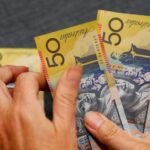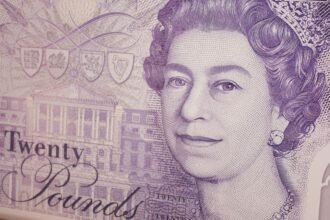- EUR/GBP trades in negative territory near 0.8485 in Friday’s early European session.
- The preliminary UK August PMI data was better than expected, pushing back the expectation of a BoE rate cut.
- Investors expect two more rate cuts from the European Central Bank (ECB) this year.
The EUR/GBP cross extends its decline near 0.8485 during the early European trading hours on Friday. The lower bets that the Bank of England (BoE) will cut the interest rate in September after the upbeat Purchasing Managers’ Index (PMI) reports provide some support to the Pound Sterling (GBP) and drag the cross lower. Later on Friday, the BoE Governor Andrew Bailey’s speech will be closely watched.
Business activity in the UK showed its strongest growth in four months alongside cooling price pressures, according to a survey on Thursday. S&P Global’s Composite Purchasing Managers’ Index (PMI) rose to 53.4 in August from 52.8 in the previous month. The figure was slightly higher than the expectation of 52.9. This encouraging report scaled back investors’ bets on a BoE interest rate cut next month, which has boosted the GBP against the Euro (EUR). Financial markets are now pricing in less than 30% possibility of a BoE September rate cut after Thursday’s PMI data.
On the Euro front, the European Central Bank (ECB) maintained interest rates unchanged at its July meeting, hinting at the likelihood of rate reduction later this year, according to minutes from its recent meeting released on Thursday. Investors have priced in around a 90% odds of 25 basis points (bps) cut in the deposit rate to 3.5% in September and see at least one more move before the end of the year. This, in turn, weighs on the shared currency.
The ECB Governing Council member Martins Kazaks said that he’s ready to discuss another interest rate cut at the September meeting, voicing confidence in inflation returning to 2% as well as worries over the economy.
Pound Sterling FAQs
The Pound Sterling (GBP) is the oldest currency in the world (886 AD) and the official currency of the United Kingdom. It is the fourth most traded unit for foreign exchange (FX) in the world, accounting for 12% of all transactions, averaging $630 billion a day, according to 2022 data. Its key trading pairs are GBP/USD, aka ‘Cable’, which accounts for 11% of FX, GBP/JPY, or the ‘Dragon’ as it is known by traders (3%), and EUR/GBP (2%). The Pound Sterling is issued by the Bank of England (BoE).
The single most important factor influencing the value of the Pound Sterling is monetary policy decided by the Bank of England. The BoE bases its decisions on whether it has achieved its primary goal of “price stability” – a steady inflation rate of around 2%. Its primary tool for achieving this is the adjustment of interest rates. When inflation is too high, the BoE will try to rein it in by raising interest rates, making it more expensive for people and businesses to access credit. This is generally positive for GBP, as higher interest rates make the UK a more attractive place for global investors to park their money. When inflation falls too low it is a sign economic growth is slowing. In this scenario, the BoE will consider lowering interest rates to cheapen credit so businesses will borrow more to invest in growth-generating projects.
Data releases gauge the health of the economy and can impact the value of the Pound Sterling. Indicators such as GDP, Manufacturing and Services PMIs, and employment can all influence the direction of the GBP. A strong economy is good for Sterling. Not only does it attract more foreign investment but it may encourage the BoE to put up interest rates, which will directly strengthen GBP. Otherwise, if economic data is weak, the Pound Sterling is likely to fall.
Another significant data release for the Pound Sterling is the Trade Balance. This indicator measures the difference between what a country earns from its exports and what it spends on imports over a given period. If a country produces highly sought-after exports, its currency will benefit purely from the extra demand created from foreign buyers seeking to purchase these goods. Therefore, a positive net Trade Balance strengthens a currency and vice versa for a negative balance.





















